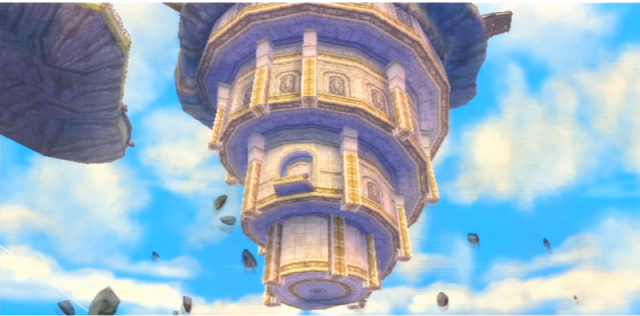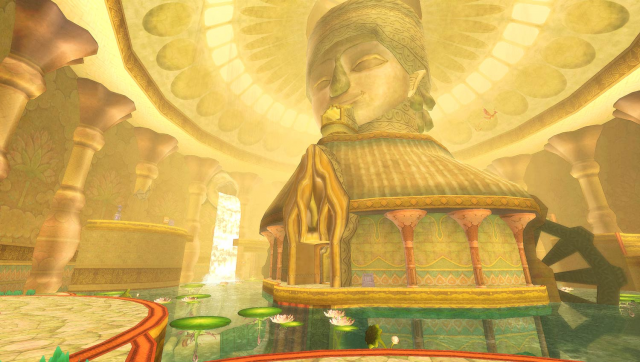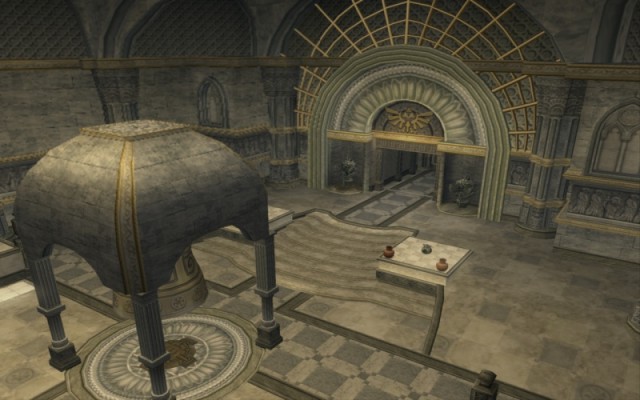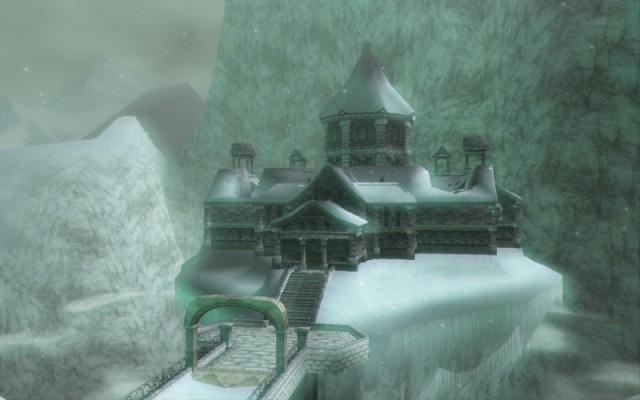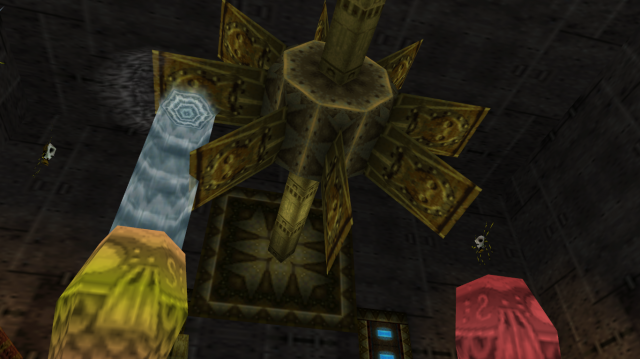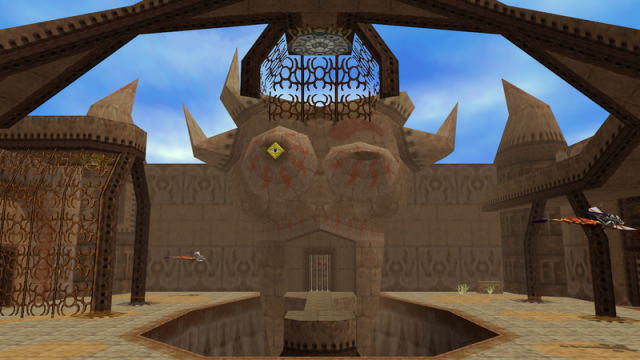Top Ten Most Creative Dungeons
Posted on September 09 2013 by Legacy Staff
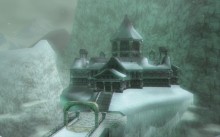 Next to bosses, dungeons are the thing I look forward to most while playing any Zelda game, old or new. For me, the most memorable and fun dungeons to replay are those that possess unique qualities or break conventions set forth by previous titles. Most of these temples, palaces, and caves do not adhere to a strict structure, and are designed however the enclosure can best maximize puzzle and enemy count. That’s all well and good, but to me, the truly thoughtful dungeons are able to resemble a structure that would make sense architecturally in real life, if someone were ambitious enough to do so. These quality dungeons should also possess a theme (or two, if pulled off well), without restricting puzzle design or coherent structure.
Next to bosses, dungeons are the thing I look forward to most while playing any Zelda game, old or new. For me, the most memorable and fun dungeons to replay are those that possess unique qualities or break conventions set forth by previous titles. Most of these temples, palaces, and caves do not adhere to a strict structure, and are designed however the enclosure can best maximize puzzle and enemy count. That’s all well and good, but to me, the truly thoughtful dungeons are able to resemble a structure that would make sense architecturally in real life, if someone were ambitious enough to do so. These quality dungeons should also possess a theme (or two, if pulled off well), without restricting puzzle design or coherent structure.
Before moving on, I would like to say that this is the list of what I interpret to be the most creative dungeons, and they are not necessarily my favorites. I do not even enjoy playing through a couple of these dungeons, but I find their themes and designs to be very creative. Once you have read through my list, I encourage you all to make lists of your own and discuss them with the rest of the ZD community. Let’s jump into it!
_________________________________________
10) Deepwood Shrine (The Minish Cap)Concept: It’s a small world after all
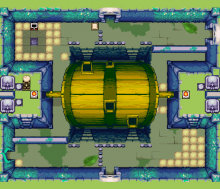 The first dungeon of The Minish Cap throws you into the world of the microscopic Minish people. Puddles become lakes. Insects become monsters. And regular enemies become bosses. Okay, the Giant Green ChuChu was not exactly the most creative boss (nor my favorite), but the idea itself is creative. The point is that the dungeon was entirely designed with the little things in mind. Lily pads act as boats. A barrel rotates to control your progress. Webs are a legitimate hazard. The insects you once effortlessly slapped away are now out for revenge. Mushrooms stretch to launch you across deep water. I mean, caterpillars (Madderpillars) are mini-bosses. Seriously, caterpillars.
The first dungeon of The Minish Cap throws you into the world of the microscopic Minish people. Puddles become lakes. Insects become monsters. And regular enemies become bosses. Okay, the Giant Green ChuChu was not exactly the most creative boss (nor my favorite), but the idea itself is creative. The point is that the dungeon was entirely designed with the little things in mind. Lily pads act as boats. A barrel rotates to control your progress. Webs are a legitimate hazard. The insects you once effortlessly slapped away are now out for revenge. Mushrooms stretch to launch you across deep water. I mean, caterpillars (Madderpillars) are mini-bosses. Seriously, caterpillars.
As an introductory dungeon, Deepwood Shrine is not meant to be a grind, and it doesn’t need to be. But what makes it so creative is its utilization of small objects in our world and making them practical for one who has been reduced to insect size. It introduces you to the world of the Minish, and does a fantastic job setting up the rest of the game and its central theme for you.
_________________________________________
9) Sword & Shield Maze (Oracle of Seasons)
Concept: A two-floor dungeon shaped like a sword and shield, and opposite element themes
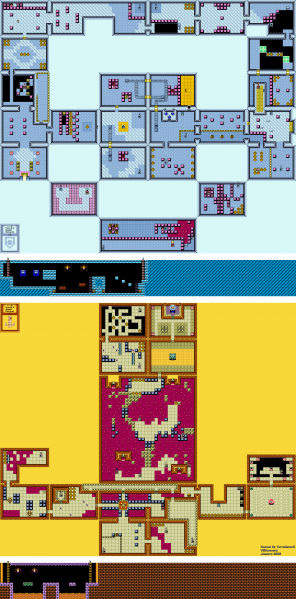 The final dungeon of Oracle of Seasons, and the only dungeon in Subrosia. Though a volcanic region, Subrosia’s dungeon features both a fiery and icy theme. The top floor appears much like any other dungeon, but with an icy blue tint, slippery floors, and ice crystals cold enough to freeze lava. The bottom floor is the fire half of the dungeon, with lava galore and paths that initially seem impossible to explore. However, these floors are situated accordingly for a reason. Your job is to throw the ice crystals into the fiery floor below, turning the lava into rock, making the bottom floor traversable.
The final dungeon of Oracle of Seasons, and the only dungeon in Subrosia. Though a volcanic region, Subrosia’s dungeon features both a fiery and icy theme. The top floor appears much like any other dungeon, but with an icy blue tint, slippery floors, and ice crystals cold enough to freeze lava. The bottom floor is the fire half of the dungeon, with lava galore and paths that initially seem impossible to explore. However, these floors are situated accordingly for a reason. Your job is to throw the ice crystals into the fiery floor below, turning the lava into rock, making the bottom floor traversable.
It is also interesting to note that the ice floor is shaped like a shield, and the fire floor is shaped like a sword. Ice is associated with the color blue, and fire is red. In Link’s Awakening DX, you can choose between obtaining a blue tunic (doubling your defense = shield), or a red tunic (doubling your attack power = sword). This fun fact does little to raise this dungeon’s position on the list, but it is a creative nugget nonetheless.
Lastly, why is the Medusa Head the boss of this opposite theme dungeon? Frypolar, the mini-boss, is not only a more fitting enemy for such a dungeon, but is also more difficult, in my opinion.
_________________________________________
8) Sky Keep (Skyward Sword)
Concept: Shifting, puzzle piece rooms
Room by room, this sky high palace is actually one of the least creative dungeons in the series. However one major detail that makes it stand out is its shifting rooms. To me, the funnest part about this dungeon is going to one of the control panels and shifting the room locations, as if assembling a jigsaw puzzle. Sometimes you cannot progress to the room you’re after unless you go to a different room and access its control panel first. And many times you cannot acquire a Triforce piece without navigating multiple rooms first. And that’s what makes this dungeon so great: there’s not a certain pattern you must follow and path you must take. The Triforce pieces can be gathered in any order, which makes this dungeon feel fresh every time you play it.
That’s not to say that the puzzle-piece layout of the dungeon is the only thing worth mentioning. The challenging enemy gauntlet guarding the Triforce of Courage can be a real skill tester. You must hone your strength and balance to defeat two fat Moblins on a narrow walkway, be a swift eagle-eye with your bow as you take on several archers, and master your sword skills as you face a Stalmaster and Cursed Bokoblins. Very few moments in Zelda games will find you facing such a wide array of enemies in such a tight space and time, which adds a courage and power aspect to a mostly wisdom oriented dungeon. Huh. I guess this place really is worthy of housing the Triforce. Now if only it had a boss…
_________________________________________
7) Ancient Cistern (Skyward Sword)
Concept: Heaven meets Hell
I loved the Ancient Cistern the moment I walked in. Based on music and the serene surroundings, it seemed like a relatively peaceful dungeon, which is something you don’t see often. And despite being a “water dungeon,” it certainly doesn’t feel like one… especially when you discover what lies beneath the surface. Generally, dungeons have one theme. I assumed the Ancient Cistern’s was water. But once you lower the body of the central statue and enter the basement, you find that there is a dark and deadly shadow half to this dungeon. Mixing elements is not a new idea in the series (see #9), but who would’ve ever thought that water and shadow would be compatible? Well, they’re not (not here, anyway). But for me, that’s what makes this dungeon so creative and unique.
Zelda dungeons don’t have to make sense. And I think that us diehard fans tend to overanalyze nearly every aspect of the series. For me, walking into the cistern’s underground chamber was a complete shock and frankly, pleasant surprise. This isn’t to say that the “peaceful” half of the dungeon is too easy and that the shadow half is too hard. As a matter of fact, I would argue that the shadow half is easier than its counterpart. Unfortunately, the shadow part of the dungeon is fairly short, easy, and in the end, not very intimidating. Climbing the rope with the Cursed Bokoblins taking chase is the scariest part, so at least we have that (but again, it’s easy). So if I have complaints, why did the Ancient Cistern make the list? Well, let’s remember that this list focuses on dungeon creativeness and originality, not difficulty. The design elements of each part of the dungeon are subtle, yet somehow in your face at the same time. The dark half expresses feelings of death beyond the obvious (music, color, presence of Cursed Bokoblins). A dark, seemingly bottomless chasm, a rotating wheel that sends victims into a wall of spikes, and light shining down on a pit of skeletons all scream signs that this area was once used for torture. I particularly like the beam of light with a rope that seemingly tells victims there’s a way out. (Dark Knight Rises, anyone?) Then of course zombies pop out to bring you back down to their level to suffer forever.
On the other hand, the “peaceful” side of the dungeon has elements that scream life. Water, the source of all life, is obvious, but there is also lush, green vines growing everywhere, and a variety of enemies that aren’t of a particularly scary nature (unlike the Cursed Bokoblins and Keese found below). It should also be noted that the dungeon relies heavily on Eastern concepts, particularly the giant statue in the center, resembling a Buddhist. Buddhism appropriately has unique and spiritual views on life, and that death happily brings rebirth. Though the Sword & Shield Maze consists of opposing elements, the Ancient Cistern does so more subtly and spiritually, and it is one of my favorite dungeons in the game.
_________________________________________
6) Temple of Time (Twilight Princess)
Concept: A palace only navigable with the assistance of a living statue
Unlike most dungeons in the 3D games, this one doesn’t have an elemental theme (fire, water, etc.). Without a strong theme, design can suffer and overall fun playing through the dungeon can seem inevitable. And for the first half of the Temple of Time, it seems apparent that the player will be in store for these disappointments. The atmosphere is bland, the enemies appear to be generic and out of place, and no truly inventive puzzles have stumped you. But after reaching the top of the temple and dueling with a formidable Darknut (one of the best mini-boss fights in Zelda history), you obtain the mysterious Dominion Rod and use it to bring a statue to life… a statue that resembles one you met at the beginning of the dungeon. Your goal suddenly becomes clear: you must bring this statue back to its rightful place next to its twin to retrieve the third Mirror Shard.
While your new partner can make things even easier by crushing enemies and traps with its giant hammer, the second half of the dungeon is trickier than the first. While the first half tested your endurance, the second half will test your wisdom. What’s so creative about this dungeon, however, is that the first and second halves of the dungeon are the same exact rooms; only now you must navigate a statue through them. Leave it to the Zelda team to make six (or so) rooms feel like completely different ones once a new gameplay element is introduced. I never tire of this dungeon, and always look forward to it when replaying Twilight Princess.
_________________________________________
5) Forest Temple (Ocarina of Time)
Concept: A haunted, twisty dungeon deep in the Lost Woods
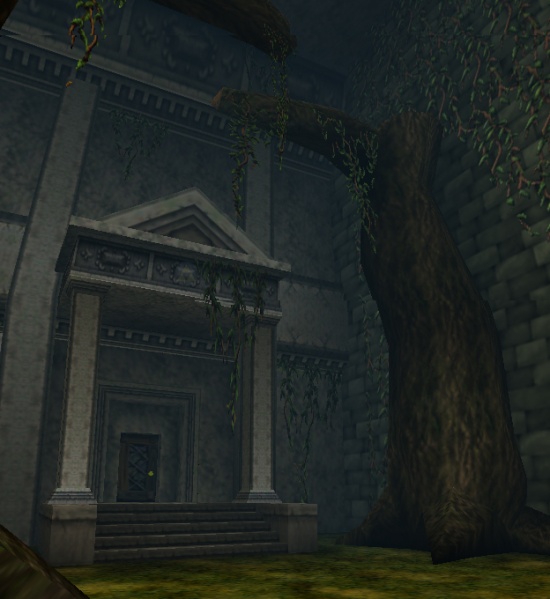 The first adult dungeon in Ocarina of Time, and my personal favorite in the entire game. Instead of going with a simple forest theme, complete with trees, grass, and other shrubbery, the Zelda team incorporated a haunted vibe to the dungeon. It sets the stage for adult Link’s quest, and let’s you know right away that it will be more challenging than child Link’s quest. As I’ve made clear before, I love when a dungeon mixes themes, and pulls it off well. As it is located in the Lost Woods, the haunted feeling fits perfectly. One of the most frightening feelings one can feel is being utterly lost. This fear can be even more intense when the end result may turn you into a Stalfos. Speaking of which, there are fittingly several of these lost souls in the Forest Temple itself.
The first adult dungeon in Ocarina of Time, and my personal favorite in the entire game. Instead of going with a simple forest theme, complete with trees, grass, and other shrubbery, the Zelda team incorporated a haunted vibe to the dungeon. It sets the stage for adult Link’s quest, and let’s you know right away that it will be more challenging than child Link’s quest. As I’ve made clear before, I love when a dungeon mixes themes, and pulls it off well. As it is located in the Lost Woods, the haunted feeling fits perfectly. One of the most frightening feelings one can feel is being utterly lost. This fear can be even more intense when the end result may turn you into a Stalfos. Speaking of which, there are fittingly several of these lost souls in the Forest Temple itself.
The goal of the dungeon is to track down the four Poes which have taken the flames that unlock a path to the basement, where Phantom Ganon awaits. You must defeat the Poes and make your way back to the foyer. Revealing the first two Poes requires firing arrows at paintings of them. The paintings add to the ghostly feel of the dungeon, as portraits that watch you are a common theme in movies, books, and TV shows that take place in haunted mansions. Unfortunately, the battles with the Poes themselves are not very exciting, and only one requires a different strategy to defeat.
Lastly, two corridors in the structure must be straightened and warped in order to progress. Twisty rooms would spook anyone, as it is obviously bending the rules of gravity and reality. Again, the haunted theme is at work, and the four ghosts are clearly trying to intimidate Link. They must not know that he holds the Triforce of Courage. There couldn’t be any less of an effective tactic to use against such a warrior, which I think adds to the greatness you feel when you complete the temple. “Oh yeah, I’m the Hero of Time.”
_________________________________________
4) Snowpeak Ruins (Twilight Princess)
Concept: An icy mansion inhabited by two snow creatures
After an awesome snowboarding segment, you are treated to one of the best (if not the best) dungeons in Twilight Princess. Snowpeak Ruins is not your average dungeon. It is actually a happy couple’s home. Yeto and Yeta are friendly Yetis who welcome you to their frozen abode. You tell them of your quest to retrieve the Mirror Shards and they politely allow you to use their mansion as your playground (of course them fetching the shard for you would be too convenient). Either they are unaware of it or they don’t see it as strange, but many monsters inhabit their home and will attack you at every turn.
During your search for the Mirror Shard, the ill and forgetful Yeta will mark the Bedroom Key’s location on your map. Once you finally arrive to said location, you discover that your hostess has mistakenly led you to a soup ingredient (why they keep food in treasure chests scattered throughout the mansion is beyond me). Once you return to the only two peaceful rooms in the mansion where the couple resides (the living room and the kitchen), Yeta will send you to a new location, and Yeto will provide you with some progressively better soup (Progresso, maybe?) as you advance further and further into the dungeon. With cannons, safe havens, and a certain homy charm, Snowpeak Ruins is definitely a memorable and creative dungeon worth many revisits.
_________________________________________
3) Great Bay Temple (Majora’s Mask)
Concept: A waterwheel infested structure with a factory vibe
I knew when I had the idea for this article that I was going to need at least one water dungeon. They’re all creative, and maybe this position should’ve been given to Ocarina of Time‘s Water Temple, as it was the first to use the manipulation of water as a dungeon mechanic. Lakebed Temple and the Great Bay Temple seem almost like the same idea just revamped, but if you ask me, the Great Bay Temple was not only the most challenging and fun, but also the most atmospheric. I love the vibe of this dungeon and the music that accompanies it. I almost feel like I’m in a factory, which is very out-of-place in a medieval-ish series like Zelda. But Majora’s Mask threw you into a parallel world where things could be a little more outlandish. This dungeon does not feel like it belongs in the past at all.
Water dungeons have a reputation for being frustrating, and the Great Bay Temple is no exception. The trick to completing this dungeon is keeping in mind which way the water’s flowing, where it stops, unlocking the huge structures to continue the flow of water, and occasionally reversing it. It can be quite a hassle upon your first play through, but once you’ve obtained the map and have a general idea of which rooms are which and where, its difficulty level can drop significantly. Thankfully, finding all of the fairies is not too much of a chore, with the exception of a very well hidden passageway I specifically remember. Changing the flow of water reverses the gigantic waterwheel near the temple’s entrance, and doubles the area you have to explore. The dungeon item, the Ice Arrow, comes in handy on several occasions, including turning enemies into blocks of ice to reach higher areas, and creating platforms on the surface of water to reach areas too high for the Zora dolphin-jump. Switching between the Fire Arrows and Ice Arrows to respectively melt and freeze the waterfalls to tip the giant scales is an annoying chore, but a creative puzzle mechanic nonetheless. Overall, a very fun and unique dungeon that probably boasts more atmospheric creativity than any other entry on the list.
_________________________________________
2) Sandship (Skyward Sword)
Concept: A pirate ship shifting between the past and present
The Sandship takes the concept of time travel introduced in the Lanyru Mining Facility, but with creative restrictions. Don’t get me wrong, Lanayru Mining Facility is a great dungeon, but by granting themselves the freedom of placing Timeshift Stones wherever it was convenient, the Zelda team likely had an easier time developing that dungeon from conception to final product. The Sandship not only restricts itself to one Timeshift Stone, but also stays true to the structure of an actual ship. Because this stone must be hit several times from various locations, the dungeon itself is more compact than it feels, and the game designers did a fantastic job utilizing the limited space to which they committed. They even creatively used a lifeboat as a means of traveling between the deck and lower levels. By keeping the structure of an actual ship in mind, the Zelda team provided us with one of the most realistic yet magical dungeons yet.
Even the bosses of the dungeon stay true to the theme of the setting. The ship’s mutinous captain (mini-boss) stands between you and the invaluable bow, and Tentalus stands as the Zelda version of a Kraken, a mythological creature associated with pirates and the sea. Once you receive the bow, you must use it from various places on the ship to strike the lone Timeshift Stone, changing the pathways of the ship and allowing you to progress. On a side note, this is one of my favorite versions of the bow in the series. Because you cannot lock on to targets and enemies (making using it more fun and challenging, in my humble opinion), you are required to master the weapon and become an eagle-eye marksman. Arrows also have much more range than in previous titles, adding “sniper” to Link’s long list of abilities. This makes playing through the Sandship all the more fun, and it is my personal favorite dungeon of the game.
_________________________________________
1) Stone Tower Temple (Majora’s Mask)
Concept: A sky high tower that turns upside-down
This temple is not only creative, but it is also a popular choice for many fans’ favorite dungeon in the entire series. It is also one of the most challenging, especially if you wish to hunt down every fairy. It features several mini-bosses, and is the only dungeon in Majora’s Mask that houses two items: the powerful Light Arrow and the Giant Mask. An extra prize makes finishing this complex temple all the more rewarding. What does any of this have to do with the creativity of the dungeon? Nothing. I just wanted to praise it. But I digress…
Turning a dungeon upside-down may not have been done before, but it is a simple, initial idea. However executing such a design must have been difficult. When designing the temple, the creators had to make sure that the progression of the dungeon flowed from room to room, floor to ceiling, as they alternated. But one of the most disturbingly creative elements in this dungeon is that when Link looks down, he sees the sky. That is just plain trippy, and the music does a great job illustrating the eerie yet somewhat peaceful mood in the dungeon. Naturally, because this is a video game, when Link falls down a cliff, we simply see him return to the ledge from which he fell, perhaps with a heart missing, usually flashing red. It’s too bad we can’t get a better sense of what it’s like to FALL INTO THE FRIGGIN’ SKY! That is feeling that could have been better captured by the game, but that’s just a personal nitpick.
What makes the dungeon even more creative is that it incorporates the elements found in the previous dungeons that require all your transformation masks. For instance, the Deku Mask, Goron Mask, and Zora Mask were the main masks needed to complete Woodfall Temple, Snowhead Temple, and Great Bay Temple respectively. But Ikana Canyon, the last territory of the game, did not grant you a transformation mask. So the Stone Tower Temple made use of all three. There are plenty of Deku flowers for Deku Link to float above the sky (can’t get over how odd yet awesome that sounds), lava rooms for Goron Link to stroll through, and water areas for Zora Link to swim through. And yet none of them feel forced or out-of-place. If you ask me, the Stone Tower Temple is the closest a Zelda dungeon has come to perfection in every way: challenge, atmosphere, music, enemies, puzzles… you name it. And it will probably be a long time before we see another dungeon top it.
_________________________________________
There were several candidates to choose from, and selecting the top ten was quite a grind. Look below for the Honorable Mentions. And when I say “honorable,” I mean it. The following dungeons are very creative and definitely deserve mention.
Honorable Mentions:
Thieves’ Town (A Link to the Past)
Inside Jabu-Jabu’s Belly (Ocarina of Time)
Water Temple (Ocarina of Time)
Mermaid’s Cave (Oracle of Ages)
Tower of the Gods (The Wind Waker)
Palace of Winds (The Minish Cap)
Goron Mines (Twilight Princess)
Lakebed Temple (Twilight Princess)
Temple of the Ocean King (Phantom Hourglass)
Tower of Spirits (Spirit Tracks)
Lanayru Mining Facility (Skyward Sword)
What do you all think of the list? Do you agree or disagree with it? Which dungeons were you surprised to not see on the list? What would your top ten list look like? Comment below, and let’s talk about it!



